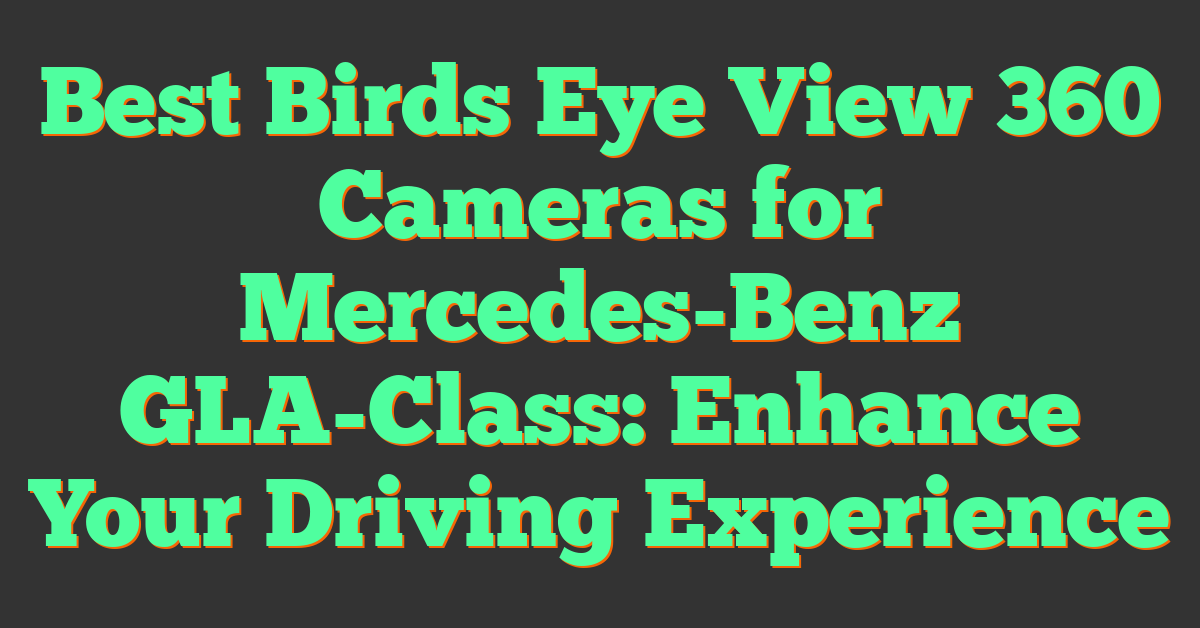Key Takeaways
- 360 cameras capture immersive, full panoramic views, offering unique perspectives traditional cameras cannot achieve.
- These devices are widely used in personal photography, social media content creation, virtual reality experiences, home security, and professional industries like real estate and education.
- Key features of 360 cameras include high-resolution video, advanced stabilization, portability, live streaming capabilities, and easy post-production tools.
- Challenges such as steep learning curves, high costs, technical limitations, and battery life highlight areas for consideration when adopting 360 cameras.
- Future advancements in AI stabilization, AR/VR integration, social media optimization, and 5G connectivity will expand the potential of 360 cameras across daily and professional use cases.
- Lightweight, compact designs paired with improved battery life make 360 cameras suitable for on-the-go photographers and videographers looking for innovative storytelling tools.
I’ve always been fascinated by how technology transforms the way we experience the world, and 360 cameras are a perfect example of that. These compact devices capture everything around us in stunning detail, creating immersive visuals that regular cameras just can’t match. But they’re not just for tech enthusiasts or filmmakers—they’ve quietly found their way into our daily routines.
From enhancing travel memories to revolutionizing virtual meetings, 360 cameras have become a versatile tool in countless scenarios. Whether it’s documenting adventures, improving home security, or creating engaging social media content, their applications seem endless. Let’s dive into how these innovative gadgets are shaping everyday life in ways you might not have imagined.
Understanding 360 Cameras
360 cameras have revolutionized how we capture and share our surroundings, providing immersive perspectives unlike any traditional camera. As someone deeply passionate about 360 photography and videography, I’ve seen firsthand the incredible potential of these tools in both personal and professional contexts.
What Are 360 Cameras?
360 cameras are devices designed to capture a full 360-degree view of a scene, covering every angle simultaneously. They achieve this by using dual or multiple wide-angle lenses that record overlapping footage or photos, seamlessly stitching the data into a spherical format. The result is an interactive image or video that viewers can explore by panning or looking around, much like they would within a virtual reality experience.
These cameras cater not only to professionals but also to casual users who want to document their adventures, create immersive content, or explore innovative storytelling techniques. From travel vlogging and event coverage to virtual tours, their uses are diverse and growing.
Key Features Of 360 Cameras
- Dual-Lens System
Most 360 cameras rely on two ultra-wide lenses, often with a field of view exceeding 180 degrees per lens, to produce fully spherical captures. For example, popular models like the Insta360 X3 use advanced lens systems to ensure seamless stitching and minimal distortion.
- High Resolution And Frame Rates
Many modern 360 cameras offer 4K, 5.7K, or even 8K resolution for crystal-clear quality. High frame rates, such as 60 fps or more, contribute to smooth video playback, which is essential for professional videographers aiming for immersive experiences.
- Stabilization Technology
Built-in stabilization, like Insta360’s FlowState or GoPro’s HyperSmooth, eliminates shakes and jitters, even during dynamic recording like action sports or handheld shooting.
- Compact And Portable Designs
These cameras are often lightweight and pocket-sized, making them ideal for photographers and videographers on the go. For instance, the Ricoh Theta SC2 weighs only 104 grams, yet it’s equipped with powerful features.
- 360 Live Streaming
« What Makes 360 Cameras Different from Traditional Cameras? Discover the Game-Changing Features
Many 360 cameras support real-time streaming, allowing creators to broadcast immersive experiences directly to platforms like YouTube or Facebook. This function benefits event organizers, vloggers, and educators.
- Editing And Post-Processing Tools
Most 360 cameras come with companion software or apps that allow users to reframe footage, adjust stitching, and create tailored outputs. For example, Insta360’s app enables FreeCapture editing, letting you convert spherical footage into flat, traditional video formats.
With these features, 360 cameras continue pushing the boundaries of traditional photography and videography, empowering creators to experiment and innovate.
Applications Of 360 Cameras In Everyday Life
360 cameras have revolutionized how we capture and experience the world. Their unique ability to record panoramic views ensures users can document moments in ways traditional cameras can’t match. Below are practical ways these devices transform daily activities.
Personal Photography And Video Recording
Capturing personal milestones becomes more immersive with 360 cameras. I use them while hiking or attending events to preserve complete surroundings in a single shot. These cameras’ ability to shoot in 5.7K or higher resolution ensures crystal-clear memories. For instance, I recorded a family gathering with spatial audio last year, which not only preserved the visuals but also brought the atmosphere back to life when replayed.
Enhancing Social Media Content
Social media platforms support 360-degree uploads, enabling creators to produce interactive posts. I often share travel stories or tutorials filmed with 360 cameras, which lets followers experience my perspective. Last month, I posted a 360-degree video of a mountain trail, letting viewers swipe through the scenery in real-time. These formats boost engagement significantly compared to standard media.
Virtual Reality And Immersive Experiences
Creating VR-ready content is one of my favorite uses for 360 cameras. The ability to make VR travel adventures or virtual property tours bridges physical distances. I collaborated with realtors earlier this year, producing immersive tours for clients viewing homes remotely. Rendering high-quality VR experiences depends on proper stitching settings, something I fine-tuned while editing those projects.
Security And Surveillance Purposes
I’ve seen 360 cameras redefine home and business surveillance. Placing one device in a central location ensures coverage of an entire space, reducing blind spots compared to traditional systems. When testing these setups, I noticed their motion detection and night vision exceed expectations, especially in low-light conditions. For instance, monitoring my workspace during the holidays gave me peace of mind without needing multiple cameras.
Benefits Of Using 360 Cameras
Using 360 cameras has transformed how I capture and share moments. These devices offer features that redefine creativity, accessibility, and portability, making them indispensable tools for photographers and videographers.
Unique Perspective And Creativity
360 cameras provide a dynamic way to capture the world differently. By recording a full spherical view, they allow me to create immersive content that traditional cameras can’t achieve. For example, I can film a landscape where viewers feel like they’re standing in the scene or produce virtual reality (VR) media that transports users to another location. These unique perspectives inspire artistic expression, from crafting interactive stories to designing visual experiences for VR headsets.
Easy Sharing And Accessibility
Sharing 360-degree content is seamless with modern platforms. Social media sites like Facebook, YouTube, and Instagram support 360 video and photos, enabling creators to share immersive visuals directly with audiences. With user-friendly editing apps, I can quickly refine my footage and make interactive posts that generate more engagement than standard content. This accessibility helps professionals showcase work and allows new users to dive into creative sharing without complexity.
Compact And Portable Design
360 cameras are lightweight and travel-friendly. Their small size fits easily into my camera bag, making them perfect for on-the-go photography or videography. Whether I’m hiking, attending events, or exploring cities, I can carry one without extra effort. Advanced stabilization features in compact designs also ensure smooth footage, even in action-packed scenarios like sports or adventure shoots. Portability combined with powerful tech makes these cameras ideal companions for everyday use.
Challenges Of 360 Cameras
While 360 cameras offer unmatched creative opportunities, they come with certain challenges that can impact their usability and adoption. Understanding these issues can help photographers, videographers, and enthusiasts overcome barriers to fully utilizing these devices.
Learning Curve For New Users
The use of 360 cameras often involves mastering unique filming and editing techniques. Unlike standard cameras, 360 devices require users to think about entire scenes rather than fixed frames. It can be daunting for beginners to learn how to avoid elements like equipment or unintended objects appearing in the footage. Stitching processes, where overlapping lens footage is combined, also demand familiarity with software, pre-shot calibration, and post-production workflows.
When I started with 360 filming, I underestimated how different the approach was from traditional photography. Tutorials, online courses, and consistent practice helped me refine these skills. For new users, dedicating time to learning camera settings, shooting angles, and editing tools like Adobe Premiere Pro or dedicated 360 applications, like Insta360 Studio, makes a big difference.
Cost And Affordability
High-quality 360 cameras often come with a premium price, making them less accessible to some users. Models such as the Insta360 X3 or GoPro Max, which offer advanced features like high stabilization and waterproof design, typically range from $400 to $700. Entry-level options exist, but their lower resolutions and fewer features limit creative possibilities.
Additionally, many users overlook costs related to accessories and storage. For instance, large 360 videos require high-capacity, high-speed SD cards, and editing such files demands powerful computers with specific configurations. When I worked in the industry, customers often asked about alternative solutions, and my advice included weighing the long-term value of investing in higher-quality gear over replacing cheaper options frequently.
Technical Limitations
Despite technological advancements, 360 cameras face ongoing technical restraints. Lower dynamic range compared to traditional DSLRs, resolution trade-offs, and visible stitching lines in final outputs are common concerns. While flagship models address these issues with algorithms and higher-quality optics, they’re not entirely eliminated. Fast-moving scenes can also strain stabilization, producing occasional jitters in the footage.
Battery life is another hurdle, especially for long shoots. Average 360 cameras last one to two hours of continuous recording, which falls short during extended projects without external power sources. Heat generation during prolonged use adds another layer of complexity, affecting device performance and longevity. From my experience, carrying spare batteries and leveraging cooling solutions during filming helps mitigate such constraints.
Future Of 360 Cameras In Daily Life
Advancements in 360 camera technology are set to expand their role in daily life. Developers are focusing on improving image quality, with resolutions already surpassing 8K in newer models. This brings sharper, more lifelike visuals, making immersive content even more engaging. Enhanced AI-driven stabilization will ensure smooth footage, even in fast-paced environments like sports or live events.
Augmented reality (AR) and virtual reality (VR) integration will redefine applications for 360 cameras. These devices will play a key role in creating interactive experiences for education, entertainment, and professional fields. For instance, virtual classrooms or VR travel will let users experience distant places and scenarios in full immersion.
Smart home and IoT integration will expand security and monitoring capabilities. 360 cameras could sync with smart systems, providing real-time updates and comprehensive surveillance through mobile apps. Motion tracking and advanced night-vision features will make them even more effective for protecting homes or businesses.
Social media platforms will likely optimize features for 360 and VR content. As creators continue to adopt these formats, expect higher engagement rates and streamlined tools for sharing immersive stories. Live streaming in 360 will also grow, enabling interactive audience experiences during events.
In professional settings, industries like real estate, healthcare, and education will increasingly use 360 cameras. Real estate professionals will offer virtual tours to remote buyers, while surgeons could utilize 360 footage for training. These practical uses will broaden the technology’s appeal across various fields.
The expansion of 5G networks will support seamless uploading and sharing of large 360 video files. Quick data transfer combined with cloud storage solutions will make it easier for users to manage content on the go. These improvements will minimize challenges like long download times or storage limits.
Looking ahead, compact form factors combined with better battery life will enhance portability. Users will carry these cameras effortlessly during outdoor shoots, adventures, or urban exploration, unlocking new creative possibilities.
Conclusion
360 cameras have undeniably revolutionized the way we capture and experience the world around us. Their ability to create immersive, interactive content has opened up endless possibilities for personal and professional use. From enhancing creativity to improving connectivity, these devices continue to push the boundaries of what’s possible in photography and videography.
As technology evolves, 360 cameras are set to become even more accessible and versatile. Whether you’re preserving memories, boosting social media engagement, or exploring innovative applications, these cameras offer a unique way to see and share life from every angle.















